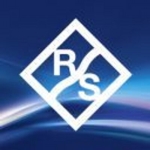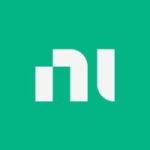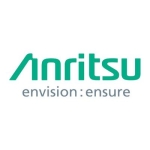What is our primary use case?
I'm currently using the 86100D and I've used the 86100C as well. The "D" is the most recent one so I'm using that right now.
We use it for test and validation. We want to verify measurements in our lab to make sure for our current products that everything looks optimal, as per the specs. We make sure that whatever we're looking at, the scope can give us all the features to validate that product. We use it for Tx jitter measurements, compliance measurements for ten-gig SFP+, QSFP28, and QSFP+. That's where it really is helpful, to do compliance measurements that actually correlate with the spec.
We are utilizing the full bandwidth. We use it for all speeds greater than ten gig.
How has it helped my organization?
There was a case where I was running a simulation of a channel, the transmit channel from the switch to the connector. In simulation, my eye measurement looked great. I wanted to see what it looked like in measurement. That's when I used the Keysight tool and a host compliance board, where I plug it into the device, using cables that plug into the scope. I measured the eye diagram to see how it correlated with my simulation. That correlation was very close. That's where it helps me really understand, whatever I’m working on in design, I can manipulate that in testing as well. It's great, it correlates there.
What is most valuable?
What I do like is the customer service, and the ability for the product to give a very clear indication of what we're trying to look at it. It breaks down all the parameters that we need to look at.
What needs improvement?
The user interface is great right now. I think they could improve it slightly, make it a bit more user-friendly. Although it is user-friendly, a bit more would make it even better.
In terms of additional capabilities, I would like to see more touchscreen and a larger screen. That would help. The current scope has a decent screen size, but at times what happens is, when I'm looking at it I need to have an extra monitor. If they could somehow improve that design with a bigger screen but not make it too heavy, that would be ideal. Some products do have a bigger screen but they're heavier. Maybe they can balance that out: Make it less heavy and provide a better screen resolution, a bigger size. That would help a lot.
There is room for improvement with some of the features of the scope. I would like them to make it a bit more simplistic. It's a very good tool overall, but if they could improve those issues slightly, that would help a lot. For example, if I want to look at what the total jitter is, they should make it simpler to find that, with different tabs.
Their de-embedding feature is a very good feature, I like what it does, I think it's better than their competitors'. If they could improve that slightly too that would be nice.
Buyer's Guide
Keysight Oscilloscopes
October 2025
Learn what your peers think about Keysight Oscilloscopes. Get advice and tips from experienced pros sharing their opinions. Updated: October 2025.
871,408 professionals have used our research since 2012.
For how long have I used the solution?
More than five years.
How are customer service and support?
On a scale of one to ten, I would give technical support a nine-and-a-half. They have very good technical support. They've been very responsive. Every time there has been an issue they've been very quick, giving speedy feedback.
Which solution did I use previously and why did I switch?
We talked with the vendor regarding PAN4 applications, regarding the new technologies that have been coming out. They suggested what we could do to improve and what we need. The good thing was, based on the support, we were able to get everything we needed and just go from there. The traction with the scope vendor and checking what the application needs in advance and doing our own research on it helped us and provided us with our needs.
What's my experience with pricing, setup cost, and licensing?
Pricing can be improved a bit. They try to make the pricing competitive but I think there are times that the competitors have good pricing. If Keysight can work on the pricing a bit more, that would help us to consider them completely, rather than the other ones.
Which other solutions did I evaluate?
Tektronix and LeCroy were on our shortlist. The reason we chose Keysight is that they are the most widely-used tools out there and we've been using them for a long time. And their customer service is a bit more responsive than the other vendors.
We did trials before purchasing and what we learned is that they all have regular tools, but in looking at the overall customer experience and features, Keysight was better.
What other advice do I have?
Study what you're looking at. Analyze. See if the tool is applicable to what you are trying to measure. You have to do your own research and see if the solution matches the application you're looking for and what the requirements are. Of course, there's always a price budget so that's something that you have to look at. But I would highly recommend this product. It's a good product performance-wise.
I've used the product for more than seven years. I've used it at different companies as well, not just my current company. We used sampling oscilloscopes and real-time scopes to make eye diagram measurements. You're taking signals from your device on the test and looking at what it looks like; how clean the signal generator is from the transmitter. In the past I've also used it to look at the receiver eye too where you can actually drive a signal or a backplane and then look at it on the receiver end, using the scopes.
In terms of a learning curve, when I started my career with this product it took about a year to get really familiar with the tools. After that, it was complete repetition that makes you an expert. You keep learning more things about it as time goes on with the same product and there are new features with different specs. It took at least a year to get familiar with the product but every time you learn new things, it's under six months or so.
We have no plans to use it to support IoT. It's more for networking switches.
The current solution we have in the lab is upgradable. Keysight has done a good job there where they have given us a solution where they can actually upgrade it. At the moment what we have is the latest upgrade. All it required was buying the license and upgrading the scope.
Disclosure: My company does not have a business relationship with this vendor other than being a customer.











